Introduction
The journey towards embracing one’s body can often be influenced by the presence of scars and stretch marks. These skin imperfections can carry with them a burden of emotional and psychological impact, often leading individuals to seek transformative solutions. One creative solution that has gained popularity is tattooing, which not only covers these marks but also celebrates the body in a unique and personalized way.
Why Consider Tattoos for Scars and Stretch Marks?
For many, tattoos serve as a form of self-expression, allowing individuals to reclaim their skin. The benefits of this artistry in relation to skin marks include:
- Camouflage: Expert techniques can mask scars and stretch marks effectively.
- Personalization: Custom tattoo designs can reflect personal stories or symbolize growth and resilience.
- Empowerment: Transforming perceived flaws into art can enhance self-esteem and confidence.
By understanding how tattoos can play a pivotal role in body positivity, you can begin to explore the various considerations and steps necessary for this transformative journey.
Understanding Scars and Stretch Marks
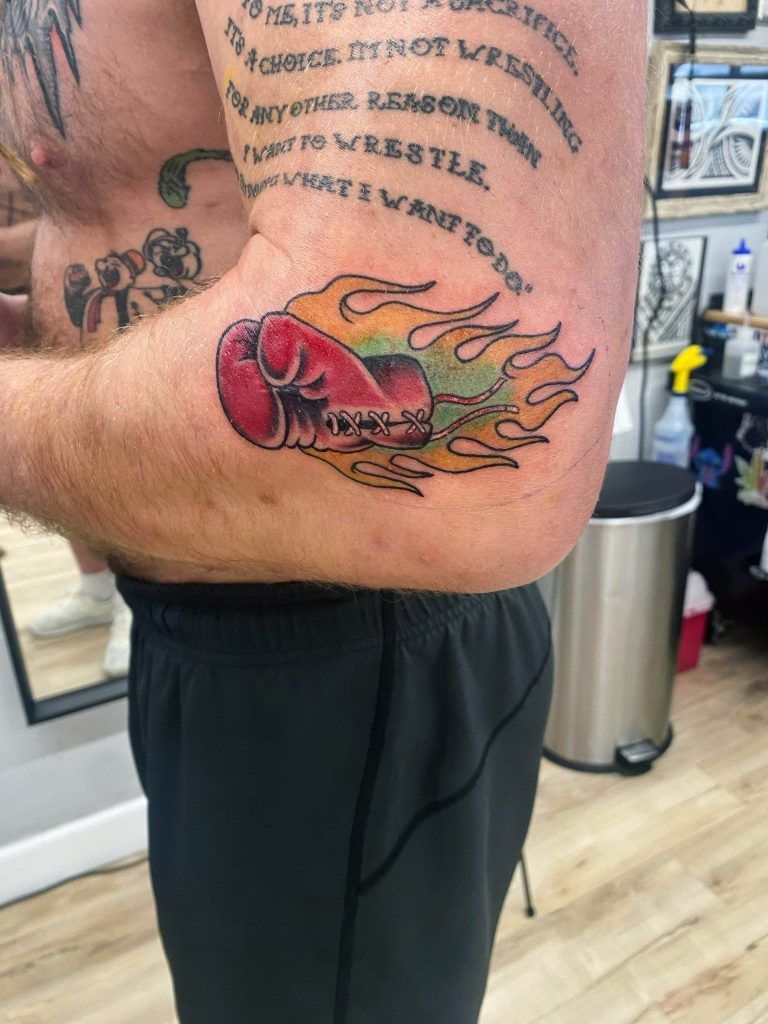
To fully appreciate the art of tattooing over scars and stretch marks, it is essential to understand these skin features. Each type comes with its unique characteristics and causes, profoundly impacting how individuals feel about their bodies.
Different Types of Scars
Scars can arise from various injuries and can be categorized into several types:
- Hypertrophic Scars: These are raised and red scars that often fade with time but can be bulky.
- Keloid Scars: These extend beyond the original injury site, becoming shiny and raised, often requiring advanced treatment for removal.
- Atrophic Scars: Typically seen in individuals with acne, these scars appear as depressions or indentations in the skin.
Understanding the type of scar can help in selecting the most suitable tattoo techniques for coverage.
Causes of Stretch Marks
Stretch marks, or striae, are often caused by a range of factors:
- Rapid Growth: During puberty, muscle development can stretch the skin rapidly.
- Pregnancy: Hormonal changes during pregnancy can lead to the expansion of the belly, resulting in stretch marks.
- Rapid Weight Gain or Loss: Fluctuations in weight can induce stretching and tearing of the skin.
Recognizing these causes not only aids in the understanding of their appearance but also emphasizes the need for a sensitive approach when considering tattoo options as a form of coverage.
Consultation with a Professional Tattoo Artist
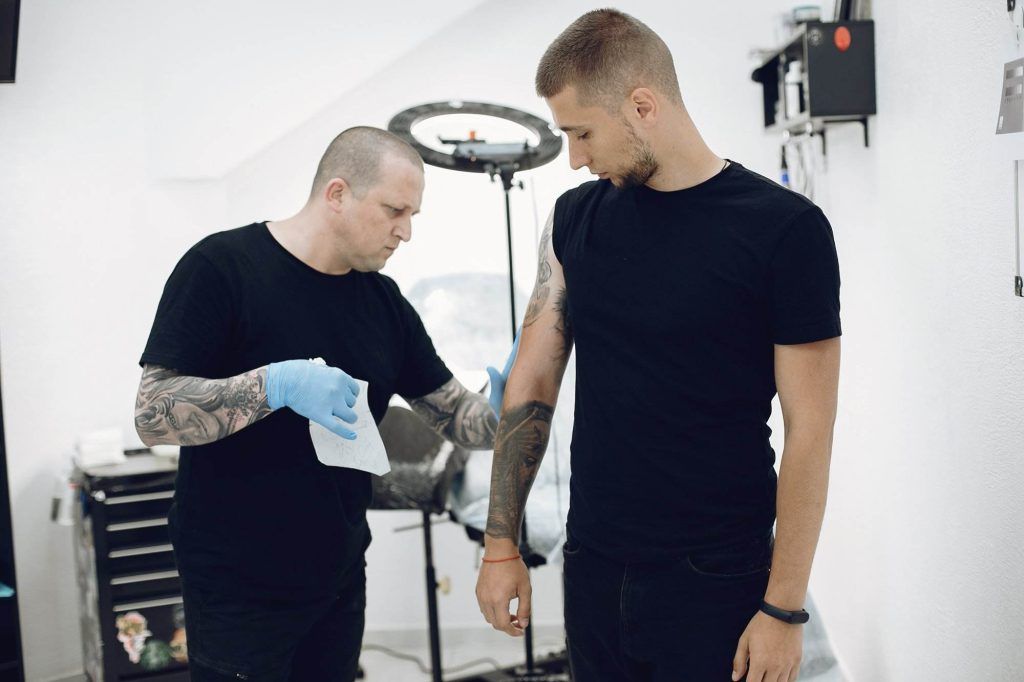
Once you’ve recognized the types of scars and stretch marks on your skin, the next crucial step involves consulting with a professional tattoo artist. This initial meeting is not just about choosing a design; it’s an opportunity to explore how your unique skin can be transformed into a canvas.
The Importance of Consultation
During the consultation, you’ll discuss various aspects that can significantly influence the outcome of your tattoo. Consider these key points:
- Assessment of Scars/Stretch Marks: A skilled tattoo artist will evaluate the texture and depth of your scars and stretch marks to determine the best approach.
- Design Ideas: Sharing personal stories or designs you resonate with can help the artist create something meaningful.
- Technique Suitability: An experienced artist will recommend suitable tattoo techniques for optimal coverage and aesthetics.
This collaboration sets the stage for creating a tattoo that not only masks imperfections but also enhances your self-image, making the consultation a vital part of the tattooing journey.
Choosing the Right Tattoo Design
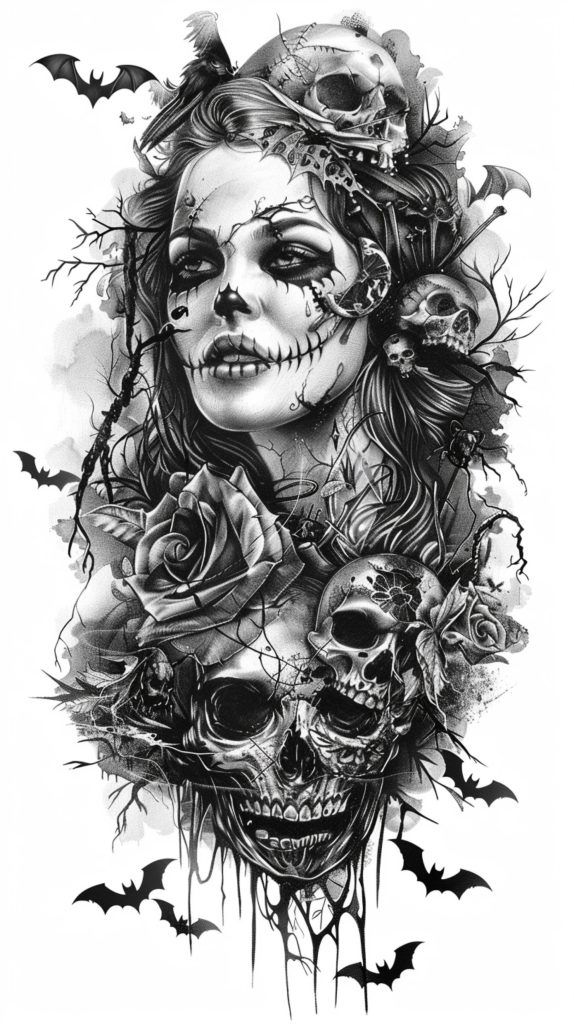
With a comprehensive understanding of your skin and an initial consultation with a professional tattoo artist completed, the next exciting phase is selecting the right tattoo design. This process is not just about aesthetics; it’s a chance to reflect your personality and experiences.
Elements to Consider in Your Tattoo Design
When choosing a design, keep these essential elements in mind:
- Symbolism: Think about what the tattoo represents. A meaningful design can transform scars into symbols of resilience and strength.
- Size and Complexity: The size of your tattoo should correspond with the area being covered. Intricate designs may not work well over certain scars or stretch marks, so consider simpler patterns for more effective camouflage.
- Color Choices: Strategic use of color can play a crucial role in blending the tattoo with surrounding skin. Dark hues may conceal more effectively, while lighter colors can add depth.
Ultimately, your tattoo design should resonate deeply with you, serving as a constant reminder of personal growth and beauty beyond imperfections.
Placement Considerations
Having narrowed down your tattoo design, the next vital aspect involves considering the placement of your tattoo. The location on your body can greatly influence not only the visibility of the tattoo but also its emotional and physical significance.
Factors Influencing Tattoo Placement
When deciding where to place your tattoo, reflect on these key factors:
- Visibility: Do you want the tattoo to be easily seen or hidden? For example, a tattoo on the forearm is more visible, while one on the back may be more discreet.
- Comfort: Certain areas of the body can be more sensitive to pain. Discuss with your artist about which placements might be more comfortable, especially near areas with prominent scars or stretch marks.
- Movement and Flexibility: Tattoos placed on parts of the body that move frequently, like the joints, may require more thought, as they could fade or distort over time.
By carefully considering placement, you ensure your tattoo not only enhances the covered area but also aligns with your personal expression and lifestyle. This strategic choice plays a significant role in your tattoo’s overall impact and longevity.
Covering Scars and Stretch Marks with Tattoos
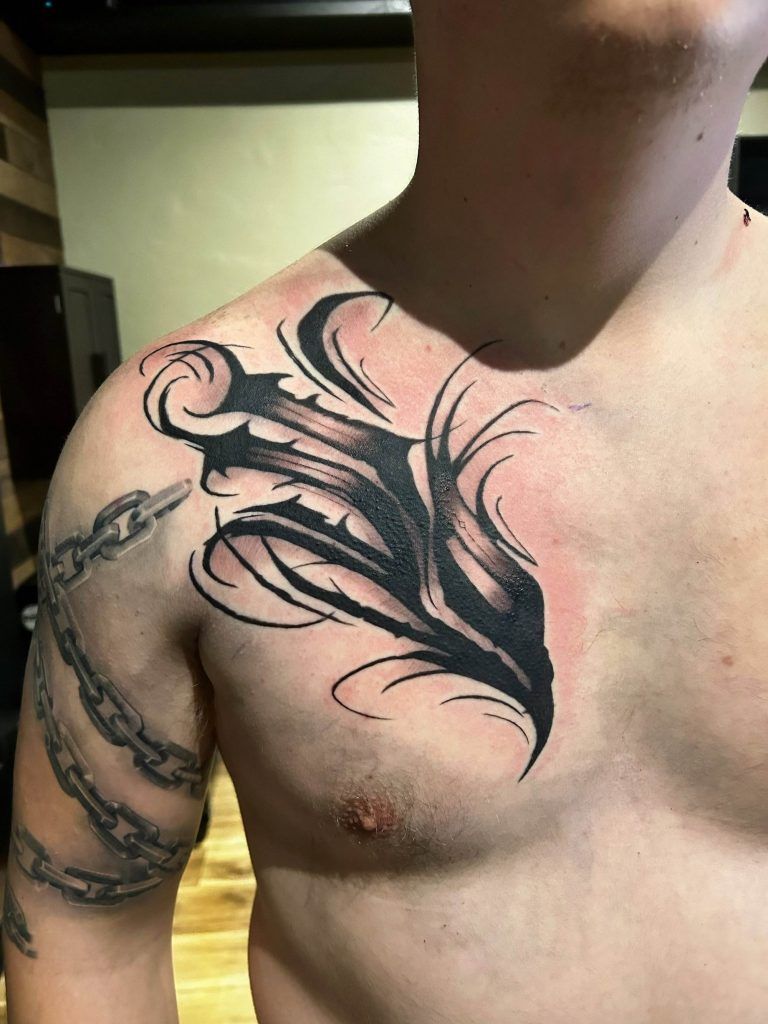
After considering placement, it’s time to delve into how tattoos can effectively cover scars and stretch marks. Utilizing specific techniques and styles allows individuals to embrace their skin confidently.
Tattoo Techniques for Scars
When it comes to tattoos over scars, expertise is key. Professional artists often employ techniques such as:
- Texturing: By mimicking the scar’s original texture, the tattoo can blend seamlessly with the skin.
- Layering: Using shades and layers carefully can help to mask the scar while creating depth in the design.
- Fine Line Work: A minimalist approach with fine lines can often work better for thinner scars, creating an elegant finish without overwhelming the area.
Tattoo Styles to Camouflage Stretch Marks
For stretch marks, certain tattoo styles are particularly effective:
- Floral Designs: Flowing floral patterns can beautifully surround and integrate stretch marks, drawing attention away from imperfections.
- Abstract Art: Unique shapes and splashes of color can distract the eye, making stretch marks less noticeable.
- Geometric Patterns: These designs provide uniformity, helping to visually break up the appearance of stretch marks.
By considering techniques and styles carefully, individuals can transform their scars and stretch marks into expressions of beauty and resilience.
Aftercare Tips for Tattooed Scars and Stretch Marks
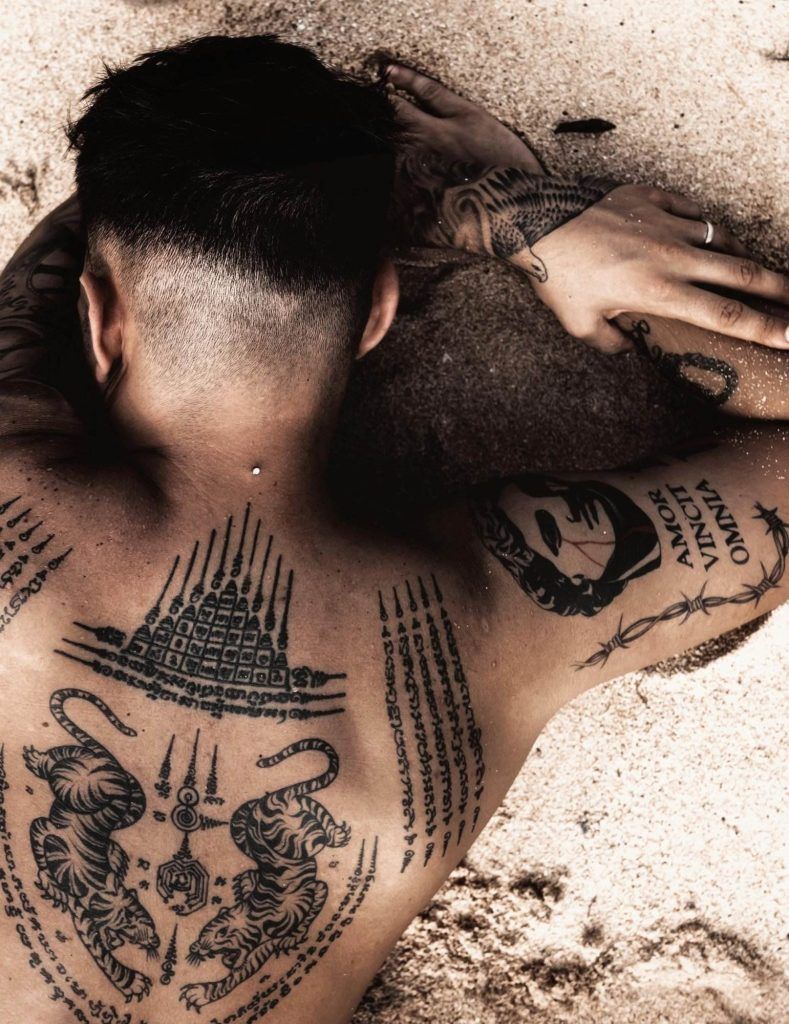
Once you’ve adorned your skin with a beautiful tattoo over scars or stretch marks, the aftercare process is crucial to ensure proper healing and optimal appearance. Maintaining your tattoo is essential for preserving its vibrancy and longevity.
Essential Aftercare Practices
Here are some important aftercare tips to keep in mind:
- Keep it Clean: Gently wash the tattooed area with mild soap and lukewarm water, avoiding any abrasive scrubbing.
- Moisturize Daily: Applying a fragrance-free lotion or tattoo aftercare ointment will keep the skin hydrated and help prevent scabbing.
- Avoid Sun Exposure: Protect your tattoo from direct sunlight, as UV rays can fade the ink and damage healing skin. Ideally, wear sunscreen once the tattoo is healed.
Be Mindful of Clothing**
- Loose Fitting: Opt for loose-fitting clothing over the tattooed area to minimize irritation during the healing process.
- Avoid Friction: Limit activities that may cause friction against the tattoo, ensuring it stays intact as it heals.
By following these aftercare guidelines, you can ensure that your tattoo not only looks stunning but also helps to celebrate your journey with scars and stretch marks.
Potential Risks and Precautions
While tattooing over scars and stretch marks can be a fulfilling and transformative experience, it’s vital to understand the potential risks involved. Being aware of these factors can help you make informed decisions and ensure a positive outcome.
Common Risks to Consider
Before getting a tattoo, keep these potential risks in mind:
- Allergic Reactions: Some individuals may have an allergic reaction to tattoo ink, resulting in irritation or rashes. It’s important to discuss any skin sensitivities with your tattoo artist beforehand.
- Infection: Improper aftercare can lead to infections. Keeping the area clean and following aftercare instructions is crucial for avoiding this issue.
- Scarring: Although tattoos can camouflage existing scars, they may sometimes lead to new scars or worsen the appearance of old ones if not done correctly.
Precautions to Take
To mitigate these risks, consider the following precautions:
- Choose a Reputable Artist: Ensure that you work with a professional tattoo artist who has experience with scar and stretch mark tattoos.
- Conduct a Patch Test: If you’re concerned about allergies, ask for a patch test using the ink before committing to a full tattoo.
By acknowledging these risks and adopting sensible precautions, you can enhance the safety and success of your tattooing journey, celebrating your body in a meaningful way.
Personal Stories and Testimonials
Hearing personal stories from individuals who have chosen to tattoo over scars and stretch marks can provide insight and inspiration. These narratives often highlight the emotional and aesthetic journey associated with body art.
Empowerment Through Art
Many individuals express how their tattoos serve as powerful symbols of resilience. Here are some common themes from these testimonials:
- Reclaiming Ownership: Individuals often share how the act of tattooing transformed their perception of their bodies. Instead of viewing scars as flaws, they embraced them as part of their story.
- Creative Expression: Many use intricate designs to celebrate their experiences, turning what was once perceived as damage into a canvas of hope and beauty.
Healing from the Inside Out
Moreover, several testimonials highlight the significant mental health benefits:
- Boosting Confidence: People report feeling more confident and empowered in social settings after getting their tattoos.
- Community Connections: Sharing their stories can foster a sense of community, connecting people with similar experiences and creating mutual support.
These personal stories serve as a reminder of the strength and transformation that can emerge from choosing to cover scars and stretch marks with meaningful tattoos.
Conclusion
In conclusion, the journey of covering scars and stretch marks with tattoos is not only about enhancing one’s physical appearance but also about embracing and celebrating individual stories of resilience. Each tattoo represents a unique journey, capturing personal growth and self-acceptance.
Embracing Your Journey
As discussed throughout this article, several key points stand out:
- Informed Choices: Understanding the types of scars and stretch marks, consulting with a professional, and choosing the right design and placement are crucial steps.
- Creative Freedom: Various tattoo techniques and styles exist to successfully camouflage imperfections while allowing for unique artistic expression.
- Aftercare and Precautions: Mindful aftercare and awareness of potential risks ensure that your tattoo remains beautiful while fostering healing.
Ultimately, the process of getting a tattoo over scars or stretch marks can be empowering, allowing individuals to rewrite their narratives and adorn their bodies with art that tells their story. Whether you are considering this journey yourself or supporting someone who is, know that each mark is an opportunity for transformation and beauty.
